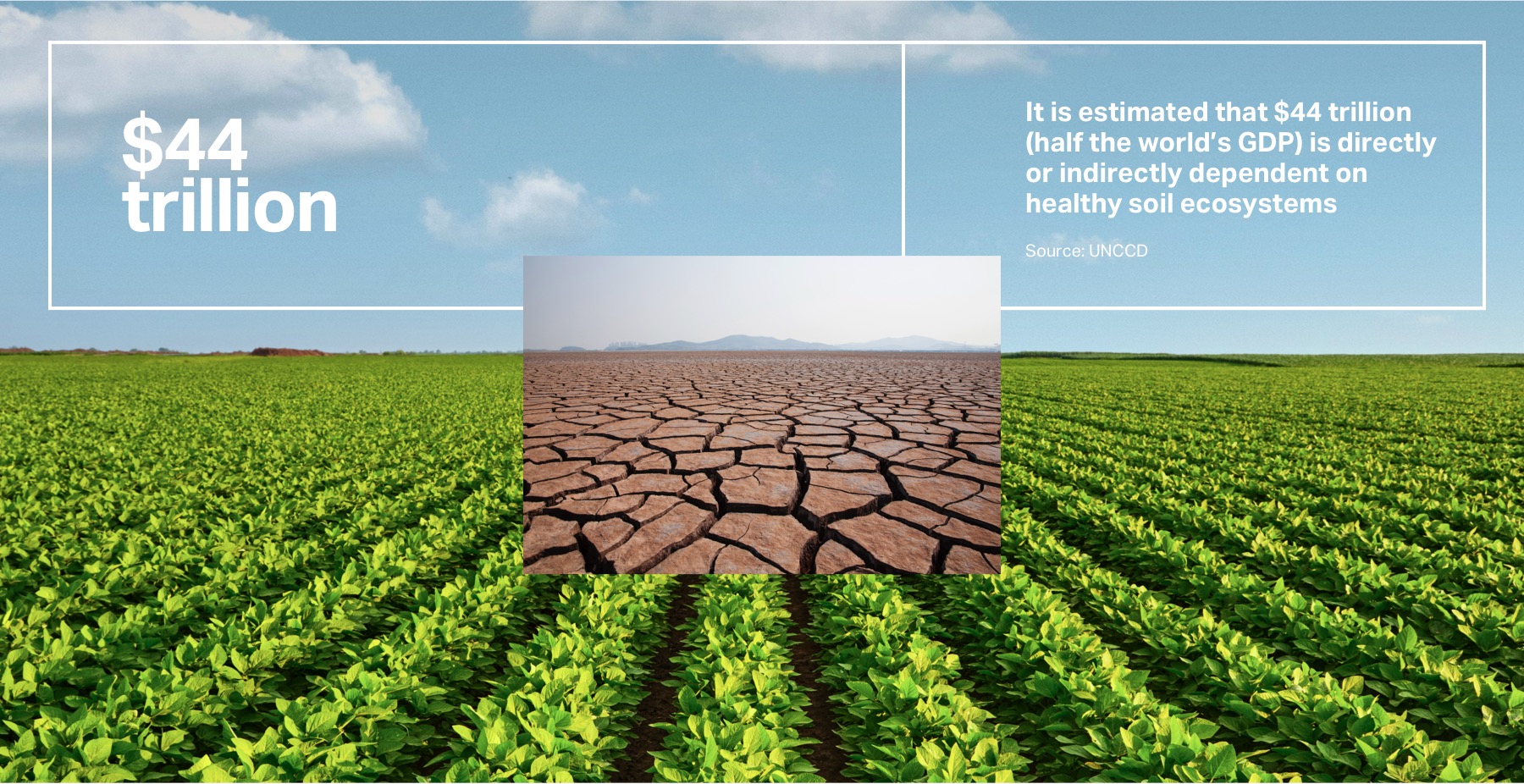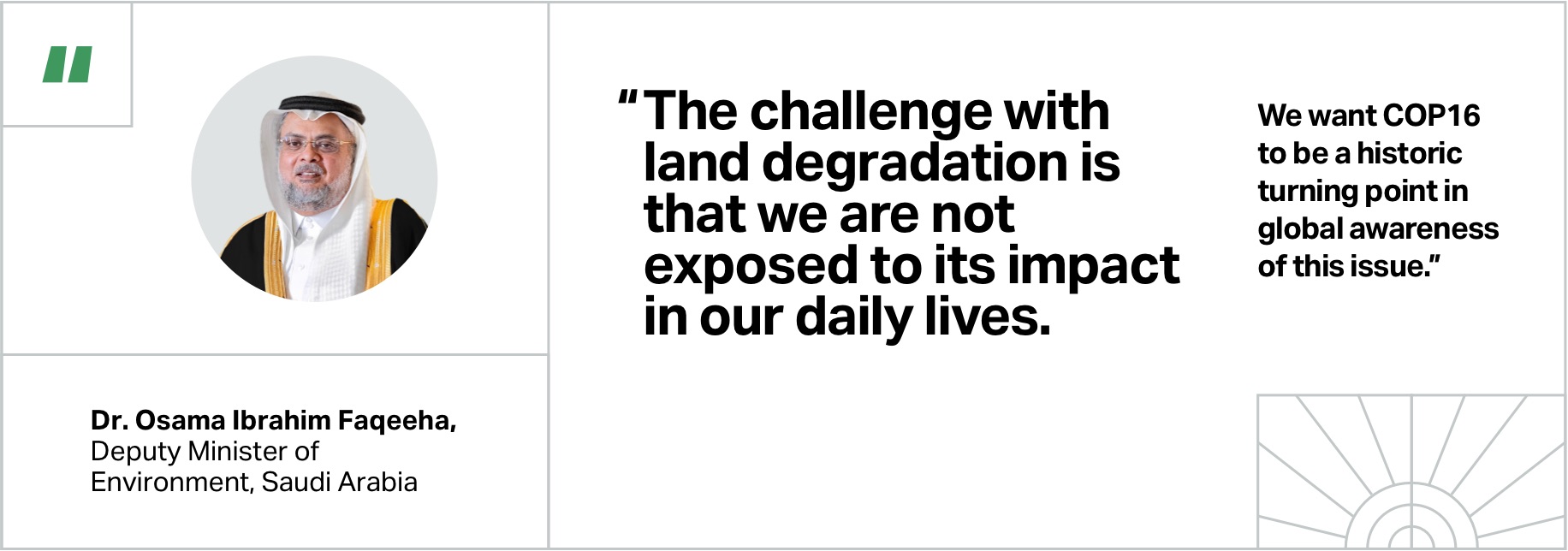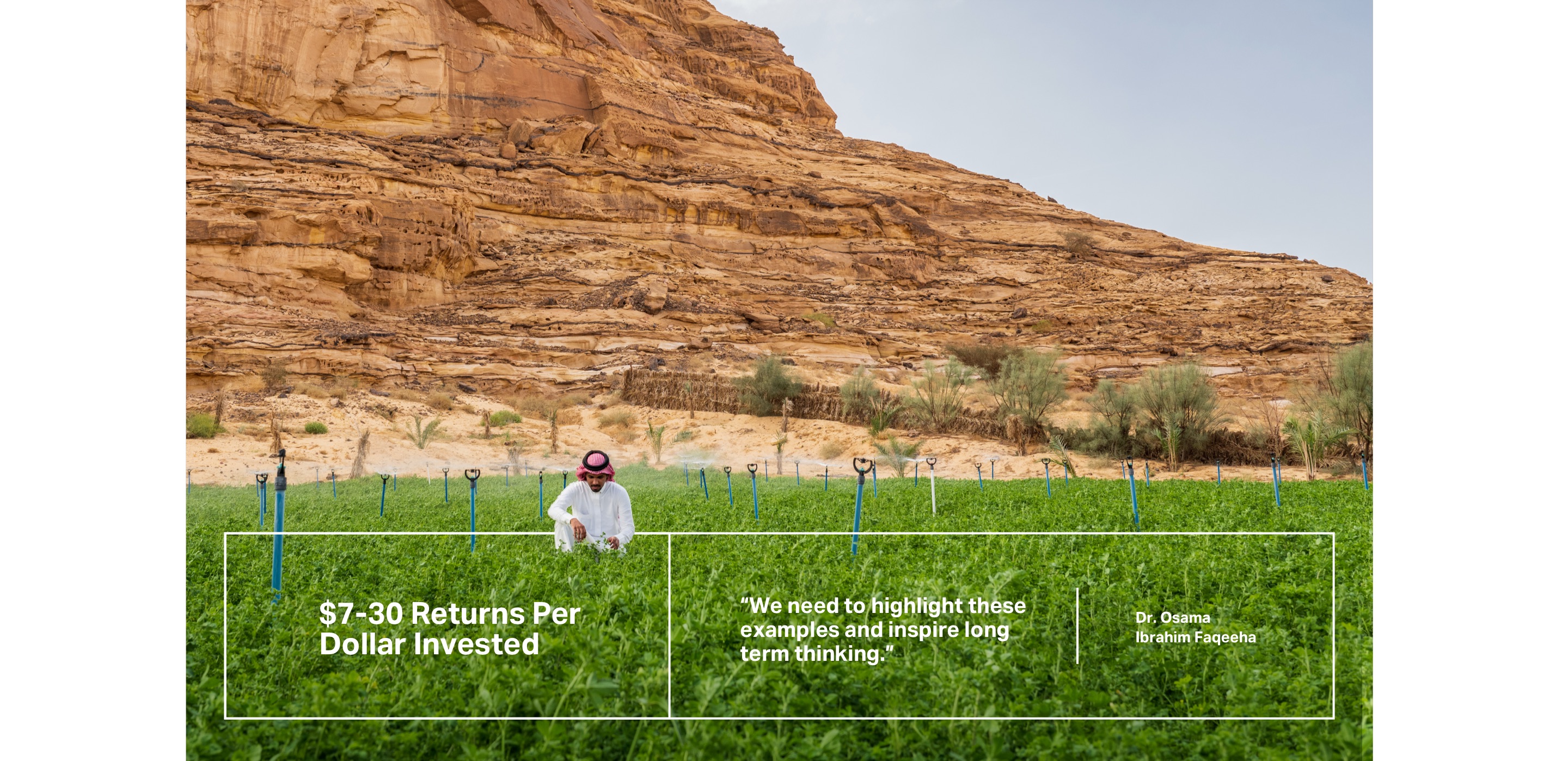The $44 Trillion Risk Degrading Our Earth: Land Restoration Takes COP16 Spotlight
Healthy soil is crucial for life on Earth. And yet, it is degrading in front of our eyes.
It is estimated that 40 percent of the planet’s land is already degraded—and an alarming 100 million hectares of land is further degraded every year.
Ninety-five percent of our planet’s food supply is reliant on healthy soil—and it’s not only agriculture that is at risk due to land degradation. Forests, rangelands, wetlands and other types of land are also rapidly degrading—with significant impact on our biodiversity and climate resilience. Many major industries, from pharmaceuticals and clothing to construction and manufacturing, need materials derived from forests and nutrient-rich land.
According to the United Nations Convention to Combat Desertification (UNCCD) Global Land Outlook, half of the world’s GDP—$44 trillion—is moderately or highly reliant on healthy soil.
Without immediate solutions to land degradation, desertification and drought—the world faces a high risk of food insecurity and climate migration, as well as devastating effects on livelihoods and the world’s economy.

The UNCCD COP16 conference, in Riyadh, Saudi Arabia from December 2–13, shines an urgent spotlight on this pressing global issue. The conference, a landmark event in Saudi Arabia, brings together global leaders across the public and private sectors to raise global awareness and drive urgent action on land restoration.
“Land degradation impacts almost every corner of our planet,” says Dr. Osama Ibrahim Faqeeha, Saudi Arabia’s Deputy Minister of Environment and COP16 Advisor.
“Be it the people fleeing drought and desertification, to consumers facing increased food prices, farmers suffering decreased yields or businesses facing supply chain instability—these are global crises that require international solutions.” added Faqeeha.
The increasing global impact
Industrial agricultural practices, improper mining, pollution, deforestation and overgrazing all contribute to land degradation. This issue is also strongly interlinked to climate change and biodiversity loss.
According to the Intergovernmental Panel on Climate Change (IPCC), one key accelerator of the land degradation issue is the increasing threat of droughts. Almost two thirds of the world’s population face water scarcity today, and this could reach 75% of the population by 2050—making droughts an urgent point of discussion at COP16. In 2022 alone, 1.84 billion people were exposed to drought according to the UNCCD.
To increase global monitoring and preparedness for drought, Saudi Arabia has planned to launch the Riyadh Global Drought Resilience Partnership during the event.
“Drought is a pressing environmental and economic emergency. The international community must act decisively on an issue impacting the lives and livelihoods of so many around the world.” says Faqeeha.

Global calls for funding, policy and partnerships
As part of the United Nations Decade on Ecosystem Restoration (2021–2030), government and environmental leaders have pledged to restore 1.5 billion hectares of land by 2030. To achieve this, Land Degradation Neutrality (LDN) targets provide an existing mechanism for countries and companies to accelerate land restoration.
“A priority at COP16 is to encourage more countries to adopt Land Degradation Neutrality targets,” said Faqeeha. “These are an essential mechanism to slow land degradation and accelerate restoration. The simple truth, however, is too few countries have took tangible actions; more commitments and resources are needed to have a global impact.”
Organizers are also advocating for new financing instruments, stronger governmental incentives and long-term partnerships with development banks in an effort to redirect the trillions of dollars invested into nature-negative projects each year.
Building a business case for nature-positive investments
According to the UN Environment Programme (UNEP), combined funding from both public and private sectors to address climate change totals approximately $200 billion per year. However, only $35 billion of that $200 billion is provided by the private sector and that is a significant short fall.

The UNEP estimates that funding for nature-based solutions must triple from current levels to reach $542 billion per year by 2030 if the world is to meet its climate change targets.
“We take land for granted. We want all of life’s conveniences, but we don’t want to know about the environmental cost of providing them,” says Faqeeha.
One key goal of COP16 in Riyadh is to shift the narrative to change the way the private sector views nature-positive investments that help close the land restoration gap.
“We need to engage with financial leaders to say: Investing in land is a business and economic imperative, it is also an opportunity. Every dollar invested in land restoration and sustainable management returns up to $30,” Faqeeha says. “We need to highlight these examples and inspire long-term thinking. The solutions are there—and what we need is a stronger commitment to them.”
